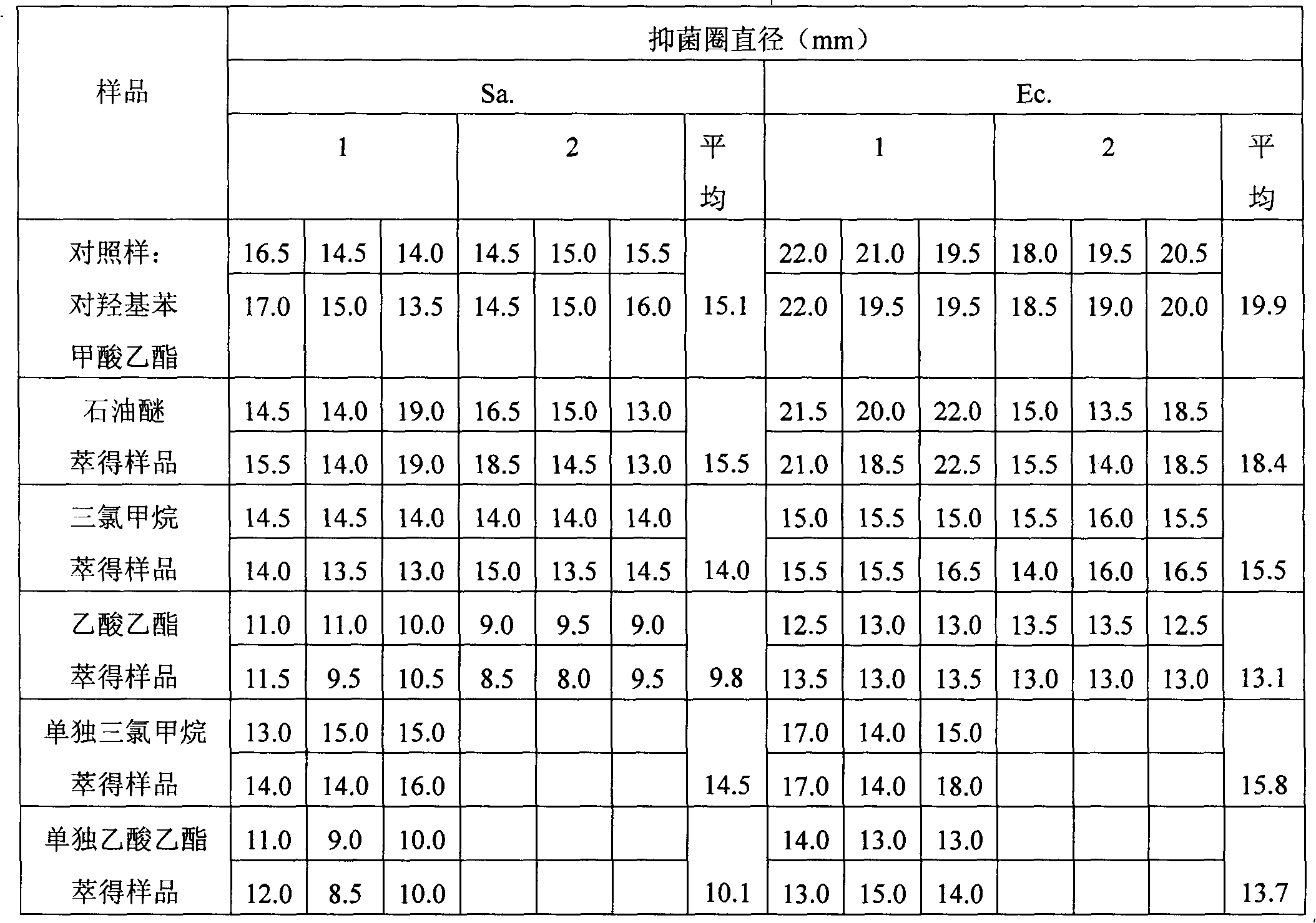Method for extracting bacteriostatic agent from bamboo leaves with water
A bacteriostatic agent and bamboo leaf technology, which is applied in the field of daily chemicals, can solve the problems of time-consuming process and achieve the effects of low production cost, simple process flow and extended shelf life
- Summary
- Abstract
- Description
- Claims
- Application Information
AI Technical Summary
Problems solved by technology
Method used
Image
Examples
Embodiment 1
[0027] Put 500g of bamboo leaves in a water tank, add 12.5L of water, heat to 95°C for extraction for 2 hours, and filter out the extract; add 7.5L of water to the residue, extract for 2 hours under the same conditions, remove the residue, and combine two leaching solution; concentrated in a water bath at 55°C to 1L under reduced pressure; added ethanol to make the final concentration of ethanol in the system 60% to 70%, stirred and mixed thoroughly, stood overnight and then filtered, concentrated the clear liquid to dryness, and obtained a crude extract after drying 77.7 g.
[0028] Disperse the crude extract with 100-200mL of water and use petroleum ether liquid-liquid extraction, each time with 50mL petroleum ether, extract 2 to 4 times until it is colorless, combine the upper petroleum ether clear liquid, recover the solvent, and vacuum the concentrate After drying, 0.315 g of product I was obtained as a pale yellow oil. Add chloroform to the remaining aqueous solution in...
Embodiment 2
[0030] Weigh 500g of bamboo leaves, put them in a water tank, add 10L of water to submerge the bamboo leaves, heat to 85°C and extract twice, each time for 3 hours, the amount of water added for the second extraction can be appropriately reduced depending on the situation, and it is better to submerge the bamboo leaves . Combine the two extracts and concentrate under reduced pressure to about 800mL, add ethanol for precipitation, so that the final concentration of ethanol in the system is 60% to 70%, after the filtrate is concentrated to about 500mL, extract sequentially according to the above method, recover each part of the solvent, and obtain the product I 0.3293g, Product II 1.1966g, Product III 1.9675g.
Embodiment 3
[0032] Weigh 500g of bamboo leaves, put them in a water tank, add 10L of water to submerge the bamboo leaves, heat to 85°C and extract twice, each time for 3 hours, the amount of water added for the second extraction can be appropriately reduced depending on the situation, and it is better to submerge the bamboo leaves . Combine the two extracts and concentrate under reduced pressure to about 800 mL, add ethanol for precipitation, make the final concentration of ethanol in the system 60% to 70%, and concentrate the filtrate to about 1000 mL. Divide into two parts on average, each part of the leaching solution is about 500mL, one part is directly extracted with chloroform, and each time it is extracted with 125-250mL of chloroform for 2 to 4 times, and the extraction is colorless, and then the extraction phase is combined to recover the solvent. The concentrate was dried to obtain 0.6037g of extract;
[0033] Another 500mL leaching solution was directly extracted with ethyl ac...
PUM
 Login to View More
Login to View More Abstract
Description
Claims
Application Information
 Login to View More
Login to View More - R&D
- Intellectual Property
- Life Sciences
- Materials
- Tech Scout
- Unparalleled Data Quality
- Higher Quality Content
- 60% Fewer Hallucinations
Browse by: Latest US Patents, China's latest patents, Technical Efficacy Thesaurus, Application Domain, Technology Topic, Popular Technical Reports.
© 2025 PatSnap. All rights reserved.Legal|Privacy policy|Modern Slavery Act Transparency Statement|Sitemap|About US| Contact US: help@patsnap.com

